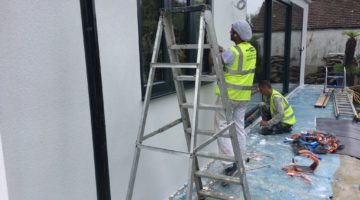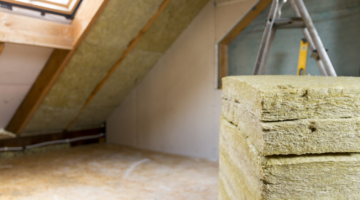
An Easy to Understand Guide to the Green Deal
This week sees the launch of the Government’s flagship Green Deal initiative. Some have described it as being an overly complex initiative that’s doomed to failure, but in this article we hope to demystify it. We aim to show you that it really isn’t that tough to understand, and you can reap the rewards and see the financial benefits from the scheme very quickly.
Why do we need the Green Deal?
Currently, between 25 – 50% of the energy we use every day is used to heat our homes. Many houses in the UK have inefficient heating systems, or are poorly insulated, meaning much of the heat in the home quickly escapes through the walls or the roof, so the boiler has to work harder (use more energy) to maintain a comfortable temperature.
By installing loft, floor, solid wall or cavity wall insulation in your home, it helps trap more of the heat in, by slowing the movement of heat through the fabric of the building. With the new energy efficient boilers, the higher their efficiency rating, the better they convert fuel to heat, so less fuel is required. So if either of these are installed in your property you will see your energy bills come down, thereby saving you money.
Looking at the bigger picture, why is the Government anxious for homes to use less fuel?
There are several reasons.
Firstly by spending less on heating bills, it means that homeowners have more money and disposable income. We are in the middle of a recession, which has seen a major squeeze on living standards and some of the biggest cuts to public services ever witnessed, therefore any savings for homeowners at this stage will be seen as welcome relief that will reflect well on the government.
The second reason is linked to meeting future energy demand. In 2020, we will be facing an ‘energy black hole’. The capacity of our grid is just about maxed out right now and there is further pressure on supply, with plans to decommission nuclear power plants towards the end of the decade.
Therefore, there is no way we will be able to meet future demand unless money is spent quickly to somehow increase capacity. So if the government can push initiatives that lead to a lower demand for energy, they should buy themselves some time and push back this potential headache for a few extra years.
The third reason, which perhaps is the most important, is to reduce the UK’s carbon emissions, as we promised to do in December 1997 when we signed the Kyoto protocol.
So now we’ve looked at why we need the Green Deal; the next section examines the ‘who’ & the ‘how’.
Who can get the Green Deal?
It is the Government’s intention that the Green Deal will be available to most residential properties in the UK, both commercial and residential. Tenants as well as owner landlords will also be allowed to apply and benefit from the Green Deal.
The following properties are eligible for Green Deal installations:
- Owner Occupied (terrace, semi, detached)
- Privately Rented – an existing tenant can apply for the Green Deal with the support and permission of the landlord/property owner
- Local Authority and/ or Housing Associations – local authorities are likely to establish specialised financing arrangements (still to be decided) under the Green Deal scheme to improve the energy efficiency of their housing stock.
How can I get the Green Deal?
Anyone can get a Green Deal assessment: you can log your interest by contacting us at: mailbox@TheGreenAge.co.uk. Leave your name and number and we will respond to you within 24 hours.
The Green Deal assessment process
There are two parts to this assessment:
(1) The EPC (you might be familiar with the EPC if you have sold, bought or rented a private property since 2007)
(2) The Occupancy Assessment.
This Green Deal assessment will take a couple of hours to complete. The first bit will be a non-intrusive survey by the assessor (don’t worry– no floor boards will be lifted up!), and the second half will be an interview with you to learn more about your energy usage habits.
Once this has been completed, a report is generated on the spot, which will suggest a series of energy efficiency measures that can be installed in your home. These will vary from house to house. Energy efficiency measures will qualify under the Green Deal only if installing them will meet the “Golden Rule”.
The Green Deal Golden Rule
According to the DECC website: ‘The key principle, or Golden Rule, for accessing Green Deal finance is that the charge attached to the bill should not exceed the expected savings, and the length of the payment period should not exceed the expected lifetime of the measures’.
So what does this actually mean for you?
The installation cost of energy efficiency improvements will be paid for directly by the savings made by the increased energy efficiency of your home, and will be recouped in clearly set out instalments attached to your utility bill. These payback instalments are to be spread out over a number of years.
It is probably easier here to use an example to demonstrate how it works in practice.
Say each year, your energy bill is £500 and an energy efficiency measure costs £100 to install.
If the savings that result from installing your insulation amount to £20 a year for example, then you bill will be as follows
Yr1 to Yr5 – £480 energy bill + £20 towards Insulation costs so £500 total
Yr6 – £480 energy bill
So in the first 5 years you still pay £500 to your energy supplier, but in year 6, you will have paid back the insulation costs, so going forward you will see the financial rewards of installing the energy efficiency measure.
This example has ignored finance costs, but in reality the utility company is providing you with a loan to pay for the insulation up front, so actually you will pay back a capital amount and a small financing cost, but the principle above still stands – your utility bill should not cost any more than before you installed the energy efficiency measure.
What if the Green Deal Golden Rule is not met?
There is an additional fund known as Energy Companies Obligation (ECO) that is available to most vulnerable members of our society, the elderly and those that are energy poor. The ECO fund pays for Green Deal Providers to still install efficiency measures that may not meet the Golden Rule of the Green Deal. So be sure to speak to your Green Deal Assessor to see if you may be eligible for this.
Choosing the energy efficiency solutions that are right for you
Once you have the list of possible solutions from the Green Deal report, you can discuss the pros and cons of each one with your Green Deal Assessor. Some of the solutions may result in your having to take on major upheavals in the home. For example, for internal solid wall insulation, you have to make some changes to the standard living space and move your furniture around as the installation process is happening.
When you have decided on the solution you want to choose and install, you’ll need to sign up to a Green Deal Plan. This is a contract between you and a private company that will install the measure, known as the Green Deal Provider (such as British Gas).
The Green Deal Provider will then arrange for a certified Green Deal Installer to come and carry out the agreed work.
Once the work has been completed, your utility company will start sending you bills that are split via the energy you use and the Green Deal payment you are making (+the financing cost). As the Golden Rule states, this should be the same or less than your previous bill payment. Note: once you have paid off the Green Deal charge, the savings the energy efficiency measures bring should be reflected in lower energy bills for your home.
What happens to the Green Deal charge if I move house?
If you move house, you will not be liable to continue paying for the Green Deal measures. The Green Deal plan is attached to the electric meter of the home and not the individual. So any new tenant or home owner moving into the property will have to take on these payments, but knowing they will reap future benefits of the Green Deal could be an encouraging point for future home buyers.
Summarising the Green Deal
- Government flagship policy to upgrade existing housing stock so they are brought to the best possible energy efficiency standards
- Save money on energy bills without paying anything upfront
- Green Deal available to most residential properties in the UK, both commercial and residential
- Find a Green Deal Assessor near you by searching on Google
- You will qualify for the Green Deal if you meet the “Golden Rule”
- ECO is there to help those that are most vulnerable
- Chose energy efficiency measures that are right for you
- If you move home the Green Deal payment stays with the electric meter, so the new inhabitants will take on the payments.












No Comments yet! Be the first one.